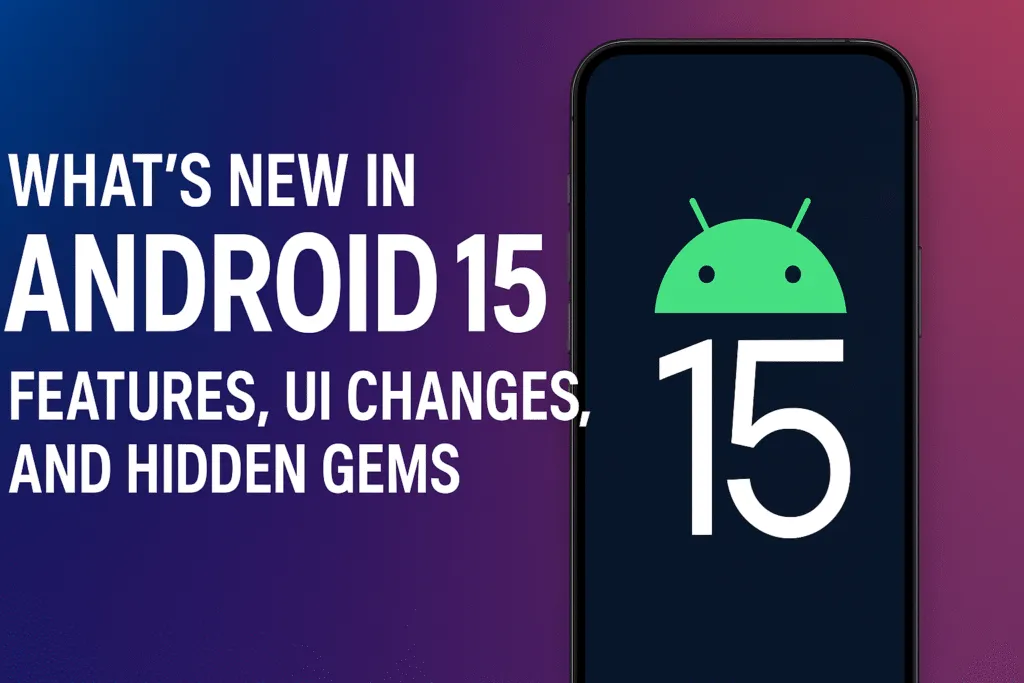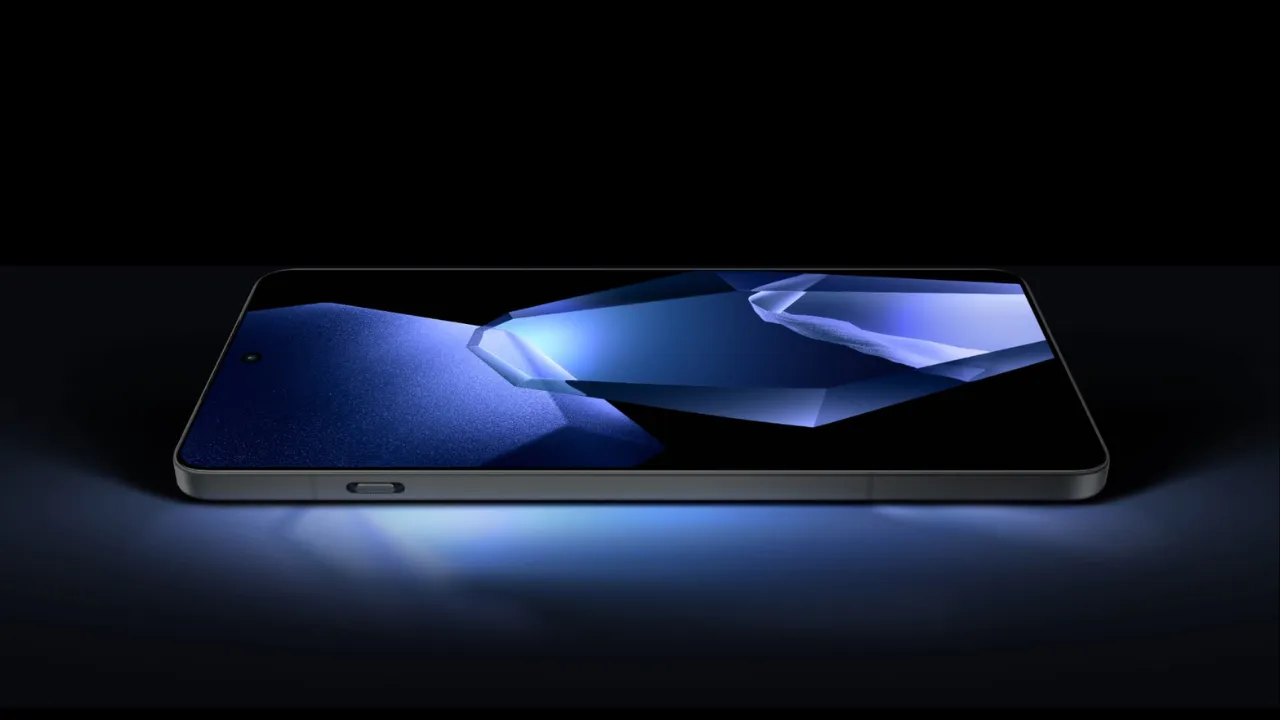Introduction: The Evolution to Android 15
Android 15 marks yet another exciting chapter in the ongoing evolution of Google’s mobile operating system. Every version brings its own set of improvements, and Android 15 is no different—delivering a more refined, secure, and user-focused experience. For tech enthusiasts and regular users alike, the arrival of Android 15 signals not just a cosmetic refresh but a step forward in usability, intelligence, and performance.
Over the years, Android has matured significantly, evolving from a simple smartphone platform into a powerful ecosystem that powers billions of devices worldwide. With Android 15, Google continues this journey by focusing on smoother animations, smarter privacy controls, and deeper AI integration that makes everyday interactions more intuitive.
What’s particularly impressive about Android 15 is how it balances innovation with familiarity. It builds upon the strengths of Android 14 while introducing subtle but meaningful changes that enhance the overall user experience. Whether it’s the new customization options, improved multitasking capabilities, or under-the-hood performance tweaks, Android 15 is clearly designed with both functionality and finesse in mind.
For tech bloggers, developers, and curious users, this new update is packed with hidden gems waiting to be explored. From redesigned interfaces to smarter automation, Android 15 feels like a confident step forward—one that reaffirms Google’s commitment to making Android better with each release.
As we dive deeper into what’s new in Android 15, you’ll see how this version isn’t just about what’s visible on the surface—it’s about how seamlessly your device works behind the scenes. Whether you’re looking for greater control, smarter suggestions, or just a cleaner user interface, Android 15 is shaping up to be one of the most user-friendly updates yet.
Top New Features in Android 15
Android 15 introduces a wide range of new features that elevate the user experience while keeping things clean, smart, and responsive. Whether you’re a casual user or a power user, this latest update brings something useful to the table. Designed with both functionality and simplicity in mind, Android 15 pushes the boundaries of what your phone can do.
One of the most talked-about features in Android 15 is partial screen sharing. This allows users to share or record a specific app window instead of the entire screen—perfect for privacy-conscious users and professionals who need to demonstrate something without exposing everything on their device. It’s a game-changer for meetings, tutorials, and productivity apps.
Another welcome addition is the notification cooldown feature. If an app keeps sending repetitive notifications, Android 15 gradually lowers their alert priority, helping you stay focused without completely silencing the app. It’s a thoughtful approach to managing interruptions without missing out on important updates.
App Pairs have also made a comeback, now with better multitasking support. You can open and switch between two apps side by side more efficiently, which is especially useful for foldable and large-screen devices. Combined with improved predictive back gestures, Android 15 makes navigation feel smoother and more intuitive.
There’s also growing support for satellite connectivity, bringing emergency communication options to select devices even in remote areas. It’s still early days, but the groundwork laid in Android 15 suggests a more connected future, regardless of your signal strength.
Each new version of Android adds layers of polish, and Android 15 continues that tradition with practical, user-focused enhancements. These top features show that Google is listening to users and steadily refining the Android experience in meaningful ways.
User Interface (UI) Changes
Android 15 brings a fresh layer of refinement to the overall user interface, making the system look cleaner, feel faster, and behave more intuitively. While the visual style remains rooted in Material You, subtle updates throughout the OS enhance both form and function in noticeable ways.
One of the first things users will notice in Android 15 is the updated lock screen customization. You can now tweak clock styles, add smart widgets, and rearrange shortcuts to better match your daily routine. This level of personalization gives your device a more tailored feel right from the start.
The volume control panel has also received a visual makeover. It’s now more compact and easier to access, with smoother animations and improved sliders for media, ringtones, and notifications. These changes not only improve usability but also add a more polished aesthetic to everyday interactions.
Android 15 also introduces better dynamic theming, with Material You adapting more intelligently to wallpapers, accent colors, and icon shapes. The result is a UI that feels consistent and personalized across apps and system elements. Even third-party apps are increasingly aligning with this style, creating a unified visual language throughout the device.
Transitions and animations have been refined as well, offering a smoother and more responsive feel when switching between apps or navigating system menus. Android 15 doesn’t rely on dramatic redesigns—it enhances what already works, creating a more seamless and visually pleasing experience.
Overall, the user interface improvements in Android 15 may seem subtle at first glance, but they collectively make a big difference in daily use. From better customization options to smoother navigation, these changes help Android 15 feel more modern, efficient, and user-friendly across all devices.
Performance & Battery Improvements
Android 15 focuses heavily on delivering a faster, smoother experience while being kinder to your battery. With every new release, Google fine-tunes how Android handles background tasks, system resources, and power consumption—and Android 15 continues that tradition with some meaningful upgrades.
One of the standout improvements is smarter background task management. Android 15 limits unnecessary wake-ups and optimizes how apps behave when not in active use. This means your device can now preserve more energy without sacrificing functionality, especially when running multiple apps in the background.
Battery optimization also sees a boost with updates to the Android Runtime. Apps now run more efficiently thanks to under-the-hood improvements in code execution and memory handling. You’ll notice apps opening quicker, switching faster, and using fewer system resources overall—ideal for mid-range and budget devices, not just flagships.
Thermal management has also been enhanced. Android 15 introduces better throttling logic to prevent overheating while maintaining consistent performance. This is especially useful during long gaming sessions or when recording high-resolution video, as it helps the device stay cooler without sudden performance drops.
For those who use adaptive battery features, Android 15 refines how your phone learns usage patterns and adjusts power allocation. The result? Longer screen-on time and fewer overnight battery drains.
Together, these improvements show that Android 15 isn’t just about visual polish—it’s about making your phone work smarter behind the scenes. Whether you’re streaming, gaming, or just scrolling through social media, Android 15 helps ensure your device performs well while lasting longer on a single charge. It’s a thoughtful balance of speed and stamina, perfectly aligned with the needs of modern users.
Security and Privacy Upgrades
Android 15 takes a major leap forward in giving users more control over their data and privacy. With each new version, Google continues to strengthen Android’s core security, and this release brings smarter protections, better transparency, and tools that make it easier to manage your digital footprint.
One of the headline features is Private Space—a dedicated area on your phone where you can hide sensitive apps behind an extra layer of authentication. Whether it’s banking, health, or work-related apps, Private Space ensures that only you can access them, even if someone else has your phone unlocked.
Android 15 also improves app permission handling. Now, when apps request access to features like location, camera, or microphone, the system offers more granular controls and better real-time indicators. You’ll instantly know when an app is using your camera or mic, with clearer visual prompts that enhance transparency.
Screen recording gets a privacy-conscious update too. When you record your screen, Android 15 lets you exclude notifications or blur sensitive content, making it safer to share recordings without accidentally exposing personal data.
Under the hood, Android 15 features enhanced encryption and more frequent security patches through Google Play system updates. This ensures that even if your phone’s manufacturer is slow to roll out updates, critical security fixes reach your device quickly.
There’s also better sandboxing of apps, reducing the risk of malicious software affecting other parts of the system. Combined with improvements in biometric authentication and on-device AI handling of sensitive data, Android 15 reinforces its role as a secure platform for both personal and professional use.
Overall, Android 15 strengthens user trust by putting privacy and security at the forefront, offering tools that are powerful, clear, and easy to use—without getting in the way of everyday tasks.
AI-Powered Enhancements
Android 15 builds on Google’s AI-first approach by bringing smarter, more context-aware features directly to your device. These enhancements aren’t just flashy—they’re designed to make everyday tasks quicker, smoother, and more personalized without sacrificing privacy.
One of the most noticeable upgrades is in text recognition. Android 15 uses on-device AI to scan and understand text in images, PDFs, and even within apps—allowing you to copy, translate, or take action without switching screens. Whether it’s extracting an address from a photo or scanning a QR code embedded in a document, this feature feels effortless and seamless.
Smart suggestions also get sharper. Android 15 analyzes how you interact with your device and uses that data (securely stored on-device) to offer more relevant autofill entries, reply options, and app actions. Over time, the OS starts anticipating your next move—whether it’s suggesting a calendar event from a chat or surfacing a boarding pass as you head to the airport.
Voice input is more fluid than ever, thanks to improvements in speech recognition. Dictation is now faster, more accurate, and understands context better—making it ideal for messaging, note-taking, or even voice-based app navigation.
Additionally, Android 15 expands its use of AI in accessibility features. For example, users with hearing or vision impairments will benefit from enhanced live captions, audio descriptions, and gesture-based controls, all powered by intelligent machine learning models.
The best part? All of these AI enhancements happen locally on your device, keeping your personal data private while delivering real-time performance. Android 15 proves that artificial intelligence isn’t just about futuristic tech—it’s about making your smartphone smarter, more helpful, and uniquely yours every time you pick it up.
Hidden Gems & Underrated Features
While Android 15 brings plenty of headline-worthy updates, some of its most impressive improvements are quietly tucked away—features that may not grab attention right away but make a big difference in daily use. These hidden gems and underrated tools show just how much thought has gone into refining the Android experience.
One standout is the per-app camera and microphone access settings. Instead of a global toggle, Android 15 now lets you control camera and mic permissions on a per-app basis in real time. This gives you tighter control over your privacy, especially with apps that don’t always need access to those sensors.
Another subtle yet useful addition is the keyboard vibration toggle, which allows you to turn haptic feedback on or off specifically for typing. It’s a small tweak, but for those who value quiet or battery-friendly typing, it’s a welcome improvement.
You’ll also find more granular haptic feedback controls across the system. From gesture navigation to system alerts, Android 15 lets you fine-tune how your device feels in your hand. This adds a new layer of personalization for users who want their phone to respond exactly how they like.
Android 15 also introduces improvements to eSIM management, making it easier to switch between carriers or manage multiple profiles. This is especially handy for travelers and dual-SIM users who rely on flexibility.
And, of course, no Android release would be complete without a new Easter egg—a fun little nod to the community that reminds us Android isn’t just about function, but also personality.
These quiet upgrades in Android 15 won’t always be front and center, but once you find them, you’ll wonder how you lived without them. They reflect a thoughtful approach to design—focused on giving users more control, comfort, and choice.
Device Compatibility and Rollout Timeline
With Android 15, Google continues its structured rollout strategy—starting with Pixel devices and gradually expanding to other manufacturers over time. As always, if you’re eager to experience Android 15 early, owning a recent Pixel phone gives you a front-row seat to the latest features and updates.
Currently, Android 15 is officially supported on Pixel 6 and newer models, including the Pixel Fold and Pixel Tablet. These devices are the first to receive both developer previews and public beta builds, allowing users and developers to explore the new OS before its final release.
For non-Pixel users, the timeline varies depending on the brand. Manufacturers like Samsung, OnePlus, Xiaomi, Oppo, Vivo, and Nothing are already testing Android 15 internally and are expected to release beta versions for select flagship devices later this year. Rollouts for mid-range and older models may take a bit longer, often arriving a few months after the official launch.
The stable version of Android 15 is expected to roll out globally starting in October 2025, with Pixel phones receiving it first. After that, each OEM will push updates according to their custom UI and testing timelines—typically within 3–6 months post-launch.
It’s also worth noting that Android 15’s modular update system, powered by Google Play System Updates, allows certain security and privacy features to be delivered independently of full system updates. This means even if your phone hasn’t received the full upgrade, you might still benefit from key improvements behind the scenes.
As always, keeping your device updated and enrolled in the respective beta program (if supported) is the best way to get Android 15 sooner. Whether you’re on a flagship Pixel or waiting on your brand’s custom skin, Android 15 is on its way to bring a smarter, smoother experience to more users than ever before.
For Developers: What’s New Under the Hood
Android 15 isn’t just about surface-level polish—it packs powerful updates under the hood that developers will appreciate. From new APIs to performance optimizations, this release gives app creators more control, better tools, and cleaner ways to build modern, high-performance Android experiences.
One of the biggest developer-facing features in Android 15 is enhanced foreground service management. Apps must now use more precise APIs and justify background task execution, especially when targeting newer SDK levels. This encourages more battery-efficient app behavior without compromising performance or reliability.
Android 15 also introduces new privacy-preserving APIs that help developers comply with growing global data regulations. These include better support for runtime permissions, scoped media access, and new ways to request access to sensitive features like location or sensors—improving user trust while maintaining functionality.
Developers will also benefit from performance boosts in ART (Android Runtime). With improved just-in-time compilation and smarter memory management, apps run smoother and faster—even on mid-range hardware. Plus, the updated Profile Installer API helps optimize launch times by preloading frequently used code paths based on user behavior.
For media-heavy apps, Android 15 brings improved HDR support, low-latency audio enhancements, and richer camera APIs. These give devs more flexibility when building immersive content, especially for gaming, streaming, and AR/VR apps.
Additionally, Android 15 continues Google’s effort toward modularization. Features like dynamic feature modules, partial updates, and independent system components make app deployment and system updates more seamless across a wide range of devices.
Whether you’re optimizing an existing app or building something entirely new, Android 15 provides a more stable, secure, and developer-friendly foundation. By leveraging the latest tools and APIs, developers can deliver faster, leaner apps that truly shine on modern Android devices.
How to Get Android 15 (Beta & Stable)
If you’re excited to try out Android 15, there are two main ways to get it—either through the official beta program or by waiting for the stable release. Google has made it easier than ever for users and developers to test the latest features while still ensuring device safety and stability.
For early adopters, the Android 15 Beta Program is the fastest way to get started. If you own an eligible Pixel device—Pixel 6 or newer—you can enroll directly on Google’s official beta page. Once enrolled, your device will receive over-the-air (OTA) updates just like a regular software update. The beta gives you access to the newest features, UI changes, and developer tools before the stable version is released.
Alternatively, advanced users and developers can manually flash factory images or OTA files from Google’s developer site. This method is ideal for clean installs or testing specific builds, but it does require technical knowledge and carries some risk if done incorrectly.
For non-Pixel users, accessing Android 15 early depends on your device brand. Companies like Samsung, OnePlus, Xiaomi, and Oppo usually launch their own beta programs for select models a few months after Google’s initial release. Keep an eye on your OEM’s announcements and community forums for signup details.
If you prefer a stable and polished experience, waiting for the official stable release of Android 15 is the safest route. Google is expected to roll out the final version starting in October 2025, beginning with Pixel devices. Other brands will follow, typically pushing updates through their custom UIs within a few months.
Before installing Android 15, always back up your data and ensure your device is charged. Whether you’re testing the beta or waiting for the full release, Android 15 is packed with features that make the upgrade worth it.
Conclusion: A Smarter, Safer, and Smoother Android
Android 15 is more than just another version number—it’s a well-rounded update that brings meaningful improvements across the board. From powerful AI-driven features to subtle design refinements, this release reflects Google’s commitment to delivering a smarter, safer, and smoother user experience.
Whether you’re excited about the enhanced privacy tools, refined UI, performance optimizations, or hidden gems that quietly improve daily use, Android 15 shows how mature and thoughtful the platform has become. It builds on what already works while pushing boundaries in multitasking, personalization, and device intelligence.
For developers, Android 15 opens up new possibilities with better APIs, tighter system controls, and performance tools that help create faster, leaner, and more secure apps. For everyday users, it simply means a phone that feels faster, lasts longer, and respects your privacy more than ever.
As Android continues to evolve, version 15 stands out not for radical changes but for thoughtful progress. It’s a release that understands what modern users need—and delivers it without unnecessary complexity. Whether you’re using the latest flagship or a more budget-friendly device, Android 15 is here to make your mobile experience more efficient, more secure, and more enjoyable.
If you haven’t tried it yet, now’s the perfect time to explore what Android 15 has to offer. This update proves once again that Android isn’t just keeping up with the future—it’s helping shape it.
Also Read: Top 7 AI Tools Developers Should Try in 2025.
FAQs: Android 15 Explained
Q1. When will Android 15 be officially released?
The stable release of Android 15 is expected around October 2025, starting with Pixel devices. Other manufacturers will follow with their own rollouts over the following months.
Q2. Which devices will get Android 15 first?
Google Pixel devices—starting from Pixel 6 and newer—are the first to receive Android 15 updates, including beta versions. OEMs like Samsung, OnePlus, and Xiaomi typically release their updates later, depending on the model and region.
Q3. How can I install the Android 15 beta?
If you own a supported Pixel device, visit Google’s Android Beta Program page to enroll your phone. Once enrolled, you’ll receive Android 15 beta updates over the air, just like regular system updates.
Q4. Is Android 15 stable enough for daily use?
The final beta builds are fairly stable, but occasional bugs or app compatibility issues may still exist. If stability is critical for you, it’s better to wait for the stable public release.
Q5. What are the biggest new features in Android 15?
Key features include partial screen sharing, notification cooldown, Private Space for hidden apps, enhanced AI-powered suggestions, predictive back gestures, and deeper customization options.
Q6. Will Android 15 improve battery life?
Yes, Android 15 includes optimizations to background task handling, thermal management, and Android Runtime—all aimed at reducing battery drain and improving performance.
Q7. Can I revert to Android 14 after installing Android 15 beta?
Yes, but you’ll need to manually flash the factory image for Android 14, which will erase all data. Always back up your device before making such changes.
Q8. Are there any privacy improvements in Android 15?
Absolutely. Android 15 introduces more granular permission controls, real-time mic/camera usage indicators, and Private Space for sensitive apps, giving users better control over their data.













